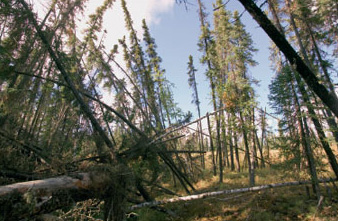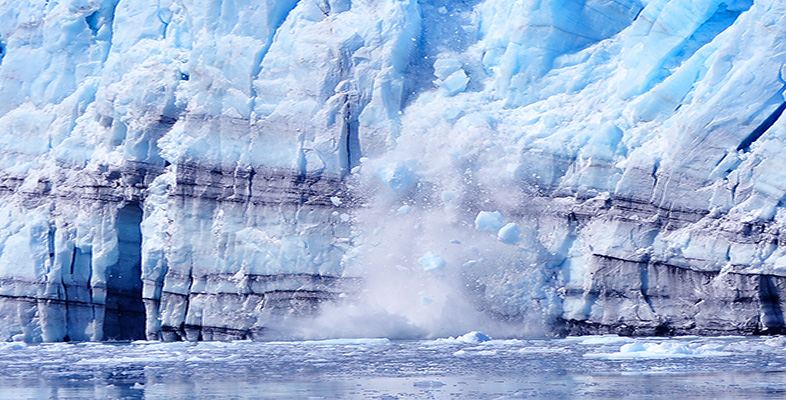2.5 A 'collective picture of a warming world'
The observed increase in GMST may be the key global indicator of greenhouse warming, but it is far from being the only tangible sign of climate change during the 20th century. This brings us back to the first bullet point at the beginning of Section 2.1. Here, we take a brief look at the growing body of evidence that many different climate variables, as well as physical and biological systems around the world, have been affected by recent climate warming. The examples collected in Box 9 will give you a flavour of the sorts of reports that are now emerging from research programmes, though for the most part we focus on the overall picture summarised in the TAR.
Box 9 'Global warming: early warning signs' (UCS, 2004)
The Himalaya The Khumbu Glacier (on a popular climbing route to the summit of Mount Everest) has retreated by over 5 km since 1953. In the central and eastern Himalaya, glaciers are contracting at an average rate of 15 m per year, and could be gone by 2035 if this trend continues - with serious implications for populations who depend on glacial meltwater for drinking supplies, etc. Meanwhile, glacial lakes are swelling in Bhutan, increasing the risk of catastrophic flooding downstream.
Alaska, USA Most of the state is underlain by permafrost (permanently frozen soil). Thawing permafrost is causing the ground to subside (by 4-10 m in some places), undermining buildings, roads and other infrastructure. In some coastal areas, wave action is undermining cliffs softened by permafrost melt, increasing the risk of flooding for native communities. In the interior, forests of spruce and birch are taking on a 'drunken' appearance (Figure 28) on softening ground, and trees are dying as they succumb to waterlogged conditions.
Chokoria Sundarbans, Bangladesh Rising sea levels have flooded about 7500 hectares of coastal mangrove forest during the past three decades. Global sea-level rise is aggravated by substantial deltaic subsidence in the area due mainly to human activities, such as reduced sediment supply following dam construction upstream for irrigation schemes, and the over-extraction of groundwater.
United Kingdom The average flowering date of 385 British plant species has advanced by 41/2 days during the 1990s compared with the previous four decades; 16% of the species flowered 15 days earlier on average. Over a 20-year period (between 1968-72 and 1988-91), many bird species have extended the northern margins of their breeding ranges in the UK by an average of 19 km.
Monteverde Cloud Forest, Costa Rica A reduction in dry-season mists due to warmer Pacific Ocean temperatures has been linked to the disappearance of 20 species of frogs and toads, upward shifts in the ranges of mountain birds, and declines in lizard populations.
Antarctic peninsula Adélie penguin populations have shrunk by 33% over the past 25 years in response to declines in their winter sea-ice habitat. Adélies depend on sea ice as a resting and feeding platform. They are being replaced by gentoo penguins (a sub-Antarctic species that has begun to migrate towards the pole) which thrive in open water.

